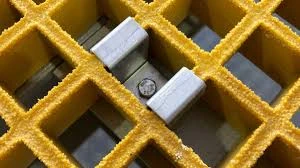
-
 Afrikaans
Afrikaans -
 Albanian
Albanian -
 Amharic
Amharic -
 Arabic
Arabic -
 Armenian
Armenian -
 Azerbaijani
Azerbaijani -
 Basque
Basque -
 Belarusian
Belarusian -
 Bengali
Bengali -
 Bosnian
Bosnian -
 Bulgarian
Bulgarian -
 Catalan
Catalan -
 Cebuano
Cebuano -
 China
China -
 China (Taiwan)
China (Taiwan) -
 Corsican
Corsican -
 Croatian
Croatian -
 Czech
Czech -
 Danish
Danish -
 Dutch
Dutch -
 English
English -
 Esperanto
Esperanto -
 Estonian
Estonian -
 Finnish
Finnish -
 French
French -
 Frisian
Frisian -
 Galician
Galician -
 Georgian
Georgian -
 German
German -
 Greek
Greek -
 Gujarati
Gujarati -
 Haitian Creole
Haitian Creole -
 hausa
hausa -
 hawaiian
hawaiian -
 Hebrew
Hebrew -
 Hindi
Hindi -
 Miao
Miao -
 Hungarian
Hungarian -
 Icelandic
Icelandic -
 igbo
igbo -
 Indonesian
Indonesian -
 irish
irish -
 Italian
Italian -
 Japanese
Japanese -
 Javanese
Javanese -
 Kannada
Kannada -
 kazakh
kazakh -
 Khmer
Khmer -
 Rwandese
Rwandese -
 Korean
Korean -
 Kurdish
Kurdish -
 Kyrgyz
Kyrgyz -
 Lao
Lao -
 Latin
Latin -
 Latvian
Latvian -
 Lithuanian
Lithuanian -
 Luxembourgish
Luxembourgish -
 Macedonian
Macedonian -
 Malgashi
Malgashi -
 Malay
Malay -
 Malayalam
Malayalam -
 Maltese
Maltese -
 Maori
Maori -
 Marathi
Marathi -
 Mongolian
Mongolian -
 Myanmar
Myanmar -
 Nepali
Nepali -
 Norwegian
Norwegian -
 Norwegian
Norwegian -
 Occitan
Occitan -
 Pashto
Pashto -
 Persian
Persian -
 Polish
Polish -
 Portuguese
Portuguese -
 Punjabi
Punjabi -
 Romanian
Romanian -
 Russian
Russian -
 Samoan
Samoan -
 Scottish Gaelic
Scottish Gaelic -
 Serbian
Serbian -
 Sesotho
Sesotho -
 Shona
Shona -
 Sindhi
Sindhi -
 Sinhala
Sinhala -
 Slovak
Slovak -
 Slovenian
Slovenian -
 Somali
Somali -
 Spanish
Spanish -
 Sundanese
Sundanese -
 Swahili
Swahili -
 Swedish
Swedish -
 Tagalog
Tagalog -
 Tajik
Tajik -
 Tamil
Tamil -
 Tatar
Tatar -
 Telugu
Telugu -
 Thai
Thai -
 Turkish
Turkish -
 Turkmen
Turkmen -
 Ukrainian
Ukrainian -
 Urdu
Urdu -
 Uighur
Uighur -
 Uzbek
Uzbek -
 Vietnamese
Vietnamese -
 Welsh
Welsh -
 Bantu
Bantu -
 Yiddish
Yiddish -
 Yoruba
Yoruba -
 Zulu
Zulu
Advancements in Fiberglass Applications for Modern Sewage Treatment Solutions and Technologies
The Role of Fiberglass in Sewage Treatment
Sewage treatment is a crucial process in managing wastewater generated by residential, commercial, and industrial activities. As environmental concerns grow, efficient and sustainable practices in sewage treatment become increasingly important. One innovative material that has gained popularity in this field is fiberglass, known for its durability, corrosion resistance, and lightweight properties.
Fiberglass, a composite material made from glass fibers embedded in a resin matrix, is extensively used in various industries, including construction, automotive, and marine applications. Its introduction into sewage treatment facilities marks a significant advancement in enhancing the overall effectiveness and longevity of treatment systems.
The Role of Fiberglass in Sewage Treatment
The lightweight nature of fiberglass also offers significant benefits. Traditional materials often require heavy machinery for transportation and installation, adding to the overall costs and complexity of construction. Fiberglass components are easier to handle, allowing for quicker and more cost-effective installation processes. This is particularly advantageous for remote or challenging locations where access may be limited.
sewage treatment fiberglass

Moreover, fiberglass structures can have a longer lifespan compared to traditional materials. Given the harsh conditions inside sewage treatment facilities, investing in durable materials is crucial. Fiberglass systems can withstand the wear and tear from continuous exposure to water, chemicals, and biological agents, reducing the need for frequent repairs or replacements. This longevity translates to lower lifecycle costs for wastewater treatment plants.
Sewage treatment technologies continue to evolve, with fiberglass playing a significant role in these advancements. For instance, fiberglass is increasingly used in fabricating clarifiers, aeration tanks, and filtration systems. These components are vital in the treatment process, as they help separate solids from liquids, aerate the wastewater, and remove contaminants effectively.
The manufacturing of fiberglass products is often more environmentally friendly compared to other materials. Many fiberglass manufacturers prioritize sustainable practices, using recycled materials in their production processes. This aligns with the broader goals of sewage treatment systems, which increasingly aim to minimize environmental impact and promote sustainability.
Additionally, fiberglass can contribute to better performance metrics in sewage treatment. The smooth surface of fiberglass components reduces friction, leading to increased flow rates and more efficient treatment processes. This can result in reduced operational costs for treatment facilities, making it an attractive option for municipalities.
In conclusion, fiberglass is revolutionizing the sewage treatment industry. Its resistance to corrosion and chemicals, lightweight nature, long lifespan, and potential for sustainable production make it an ideal material for constructing sewage treatment components. As the demand for effective and eco-friendly wastewater management solutions grows, the use of fiberglass in sewage treatment will likely continue to expand, paving the way for a cleaner and more sustainable future.









